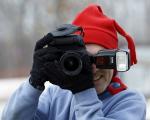Just a quick question of personal preference I guess......
I see many great pictures here on the forum. I was just wondering if you guys prefer to shoot straight to JPEG or shoot RAW.
I've never shot in RAW before. Does it really open up more options for post processing?






 Reply With Quote
Reply With Quote


















Bookmarks